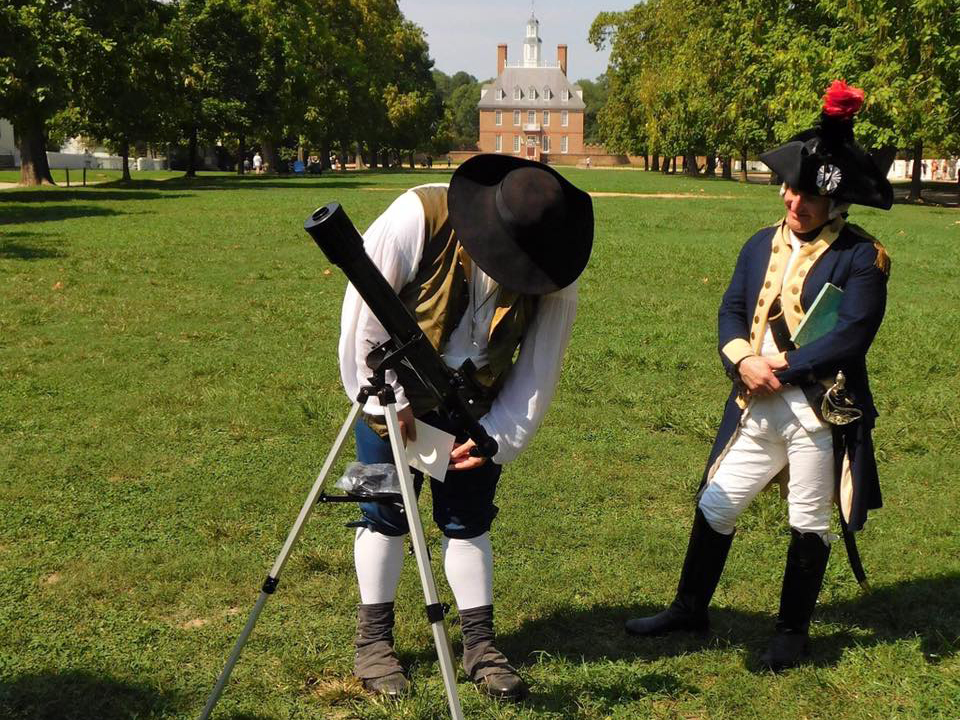The Transit of Venus and the Modern Universe
On June 6, 1761, Mikhail Lomonosov gazed through his eyepiece at a sight the world had not seen since the previous century. From his home in St. Petersburg, Russia, he noted a small dimple on the edge of the Sun’s orb. This infringement was the planet Venus beginning her slow trek across the glow of the star. Lomonosov had spent months in preparation to see her, and, along with multiple astronomers strewn about the globe, took note of her size, shape, hazy edge, and path. Countless hours and monies in an international effort had been organized to ensure he and many other scientists were able to witness the event, all with a single goal in mind. As Venus continued her journey, Lomonosov no doubt grew in excitement, knowing he was taking part in a scientific endeavor that would change the world — indeed, change the Universe forever.
On November 11, 2019, a similar, rare astronomical event will take place in the Western Hemisphere. Starting around 7:30 a.m. EST, Mercury, the smallest planet and nearest to our star, will cross into the orb of the sun in an eclipse fashion and be visible for about five hours through telescopes and binoculars equipped with solar filters. During the transit, I will be on Palace Green in Colonial Williamsburg with my telescope, projecting the image for the public to see in an 18th-century fashion, just as we did for the 2017 solar eclipse. This planet-watching and My Subsequent Talk in the Hennage Auditorium will be an awesome opportunity to interpret astronomical advances from the period, and how they affected the Enlightenment worldview.
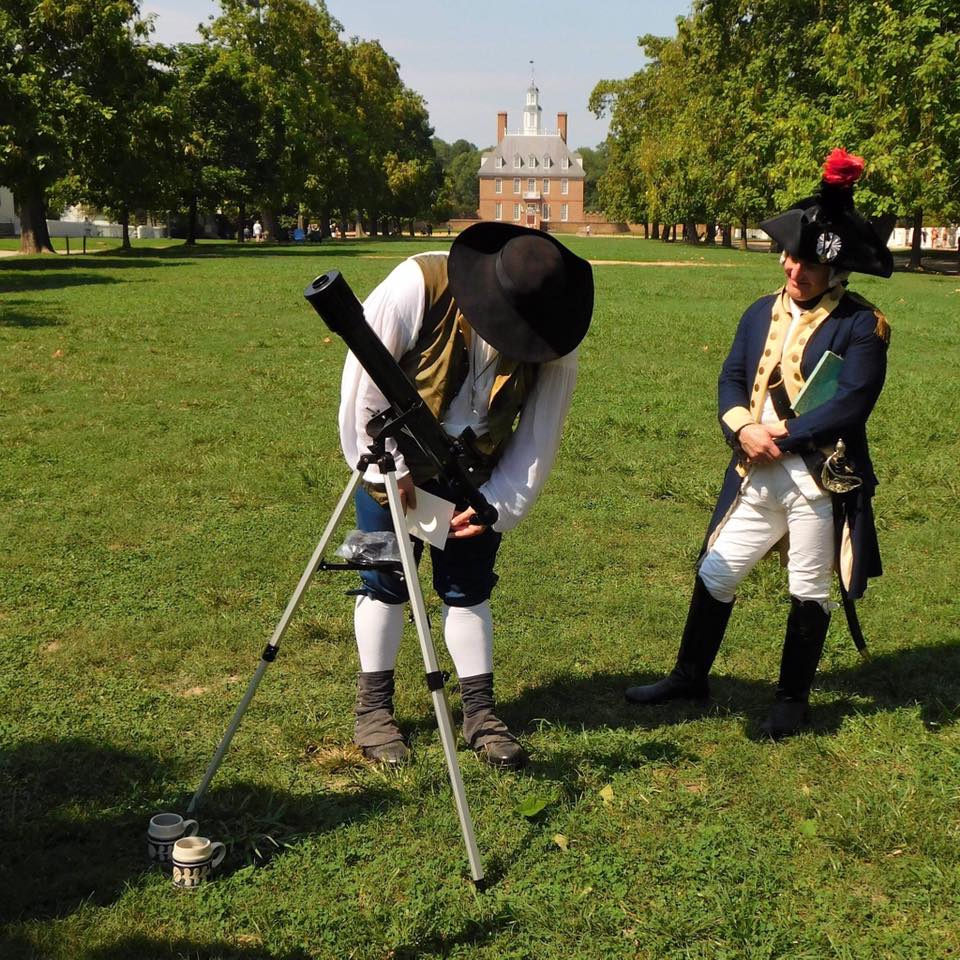
While this Monday’s astronomical activity is a good opportunity to discuss the 18th-century Universe in general, the 2019 Transit of Mercury is also a useful gateway for us to talk about one of the most important scientific events of the modern era: the 1761 and 1769 Transits of Venus. These events, when Venus crossed the orb of the Sun just as Mercury will do on Monday, permanently changed mankind’s perception of the Universe. The first observed transits occurred in the previous century, but, aside from being visually spectacular and proof of the orderly nature of the solar system, they held little scientific consequence until the early 18th century. That is, until Edmond Halley.

In 1716, Halley wrote an essay in which he implored the future astronomers of the late 18th century, knowing that he, himself, would not live to see the transits, to travel the four corners of the earth in 1761, witness and document the event. In doing so, he proposed a method by which the astronomers could use their observations to answer one of humankind’s greatest questions: What is the actual size of the universe?
Why Venus?
Transits of Venus are awfully rare. They always occur in pairs, with each element of the pair at eight years apart (hence 1761/69), but the pairs themselves alternate between about 105 and about 120 years apart. Meanwhile, transits of Mercury are much more common, occurring about 13 times per century. Surely, this would make for speedier calculations while simultaneously proving Halley’s theory. So, why Venus? The answer: size and distance. Mercury is just too small and distant to take measurements accurate enough to be useful for late 18th-century astronomers. Venus, according to 17th-century astronomer Johannes Kepler’s Laws of Planetary Motion, was located at .72 times the Earth/Sun distance, almost twice as close to the Earth as Mercury, at .39 Earth/Sun distance. As a result, Venus appears much larger than Mercury against the backdrop of the sun, making observations significantly easier.
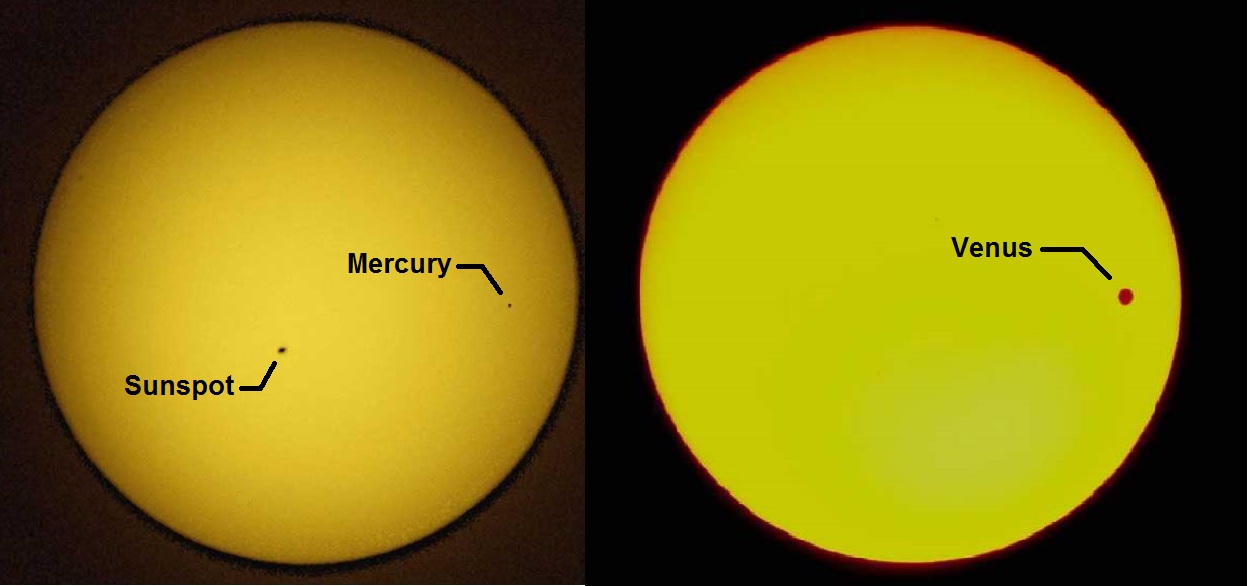
Parallax Is Key
Halley’s mode of determining the Earth/Sun distance depended on measuring a phenomena known as “parallax.” To define the word, parallax is the phenomena of a fixed object appearing to be in two different locations at the same time, when viewed from two different locations at the same time. For example, if you’ve ever held your thumb out in front of your face while closing one eye, then the other, watching the thumb “move” back and forth, you have utilized parallax in a similar fashion. The plan was to send astronomers to different latitudes across the globe where the transit would be visible, and calculate the angle of parallax. If you discover the angle of parallax, you can use the known distance between the two locations with some relatively simple trigonometry to discover the distance between Earth and Venus, as indicated by the incredibly simple diagrams from EXPLORATORIUM.ORG below:
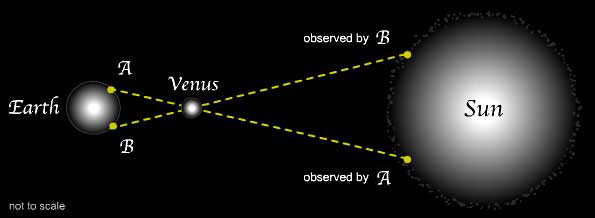
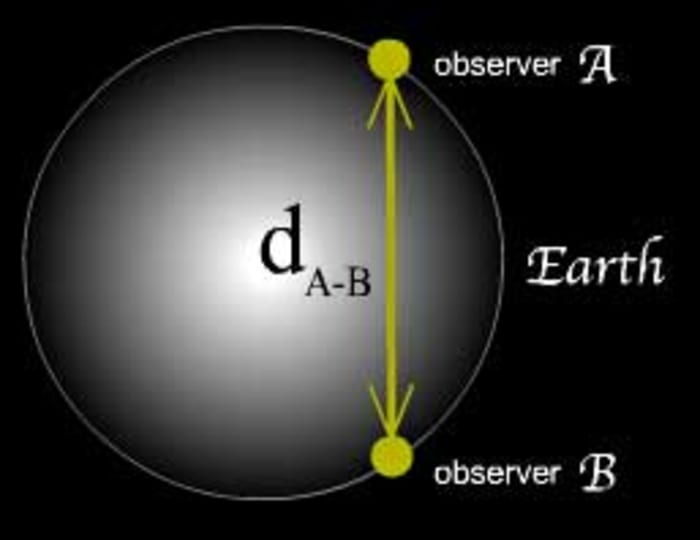
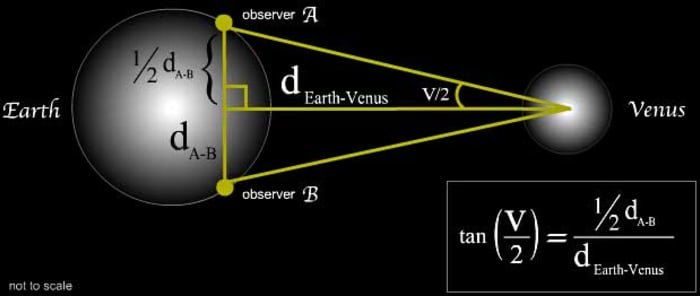
Okay, fine. So, it’s more complicated than I’d like to lead on. Suffice to say, though, with the parallax key, 18th-century astronomers were able to ascertain the actual distance from Earth to Venus. Pairing this knowledge with Johannes Kepler’s aforementioned Laws of Planetary Motion (particularly, the third law), this seemingly impossible question very quickly becomes nothing more than basic algebra, which, while still terrifying to many of us, is much more manageable.
The Takeaway
As stated before, the purpose of Halley’s essay was to utilize the 1761/69 Transits of Venus to discover the distance between the Earth and the Sun. However, when paired with Kepler’s Laws, the observations of Venus’ transit across our home star gave us much more to consider. Through this, 18th-century astronomers were able to determine the actual distance between each planet and the sun, giving humankind its first glimpse of the genuine size, in miles, of the solar system, all the way out to the farthest known planet at the time, Saturn. Even further, the events inspired people of the late 18th century to look deeper into the night sky, seeking more answers about the various points of light shining down on our little place in the Universe. How far is it to the stars? What are the stars? Could they be suns like ours? If so, are they surrounded by planets? Planets like ours? With people like us? Questions like these naturally lead not only to outward exploration, but inward as well, as demonstrated by this quote from Vermont Magazine in May, 1794:
“How scanty must the artificial divisions of this terraqueous ball appear? how small the estates for which mortals contend with such acrimony and rage? They are no more, when compared with the universe, then the minutest divisions of a grain of sand, the infinitesimals of a needle’s point.”
Robert Weathers has been working as a first-person interpreter at Colonial Williamsburg since January 2008. Over the past several years, he has studied the astronomical revolution of the mid- to late-18th-century, and he premiered this fall as Nation Builder George Wythe. When he is not in breeches, he can often be found wearing shorts no matter the weather, and riding roller coasters with his wife Kaitlyn.
